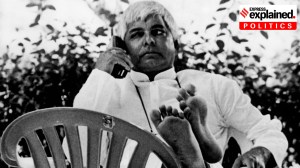Steel Minefield
Large steel projects grab the headlines, but all of them face the same problem of captive mines, reports DEV CHATTERJEE

Even if it was just for a day, the victorious Lakshmi Mittal had a glorious ‘homecoming’. During his few hours in India, the steel tycoon said his Thank Yous to everyone from the PM downwards and reaffirmed the Rs 40,000-crore investment in the country. But there was also a potent business message in shifting the proposed steel plant to Orissa: Steel giant he may control, but it has to move quickly.
Unfortunately, be it Orissa or Jharkhand (according to Mittal, that is still up for grabs) analysts say the bigger issue of allotment of iron ore mines remains undecided. This risks keeping all the investments where it has been signed: On paper.
The Mittal investment is added to the 104 memorandum of understandings (MoU) signed already by the three state governments led by Orissa, Chattisgarh and Jharkhand. Thanks to abundance of iron mines, some of world’s leading steel companies and even the smaller ones have signed up for setting up steel plants in these states.
However, till date, not a single project has taken off. ‘‘There has been no movement at all on the mines front,’’ says a steel company CEO about his steel plant in Orissa. ‘‘I just hope that before signing an MoU, the local government will do its homework about allocation of resources like iron ore mines and creation of infrastructure like land, road and rail networks,’’ he says, on conditions of anonymity.
To add to the confusion, the Hoda Committee appointed by the Centre has recently recommended that existing steel plants which do not have captive mines should be given preference for allotment of iron ore mines. The policy—which backs the concept of captive mines has, however, ruled out exclusive mines for steel-makers—would be applicable for all major minerals and precious stones which are in the purview of the Central government.
Where Does Mittal Stand?
It’s the huge iron reserves and growing steel demand in India that is making Mittal look at India and China. Domestic steel consumption of steel is just 33 kg per capita as compared with 200 kg in China. Steel demand is expected to grow due to double digit growth witnessed in the user industry like automobile, housing and real estate. Construction activity is on the rise and is expected to peak as the country invests heavily in improving its creaking infrastructure.
The Orissa project was announced as Mittal realised—like other steel makers in the country—the potential and reality of the booming Indian market. Mittal also hasn’t ruled out acquiring an Indian steel-maker, though he did say that Indian steel was going through an expansion (and not consolidation) phase. Apart from a clear interest in SAIL, if and when if comes on the market, Mittal is keeping his options open.
The Road Ahead
Industry experts say with Mittals and Posco now leading the way for investments worth Rs 200,000 crore promised in three states, the state governments will now work on the allocation of resources to kick-start the projects. Tata Steel has already started work on the port with Larsen and Toubro while Korean firm Posco is worried about the delay in granting mining leases to the company.
The high-profile Mittal project would, however, pressurise Orissa government to decide on mining leases for all the 43 MoUs it has signed for new steel projects with an installed capacity of 58 million tonnes—almost half of Arcelor-Mittal capacity.
The Orissa government said it will allot mining leases once a company completes 25% of its planned expenditure. But steel companies say without any commitment on iron ore reserves, it would be difficult for them to go ahead with investments. ‘‘The 25% investment is too risky. What if the government changes and a new government comes out with a new policy?’’ says a Delhi-based steel maker.
The Hoda Committee is a step towards formulating that broadbased policy. It has suggested a timeline for project approvals, and even has a clause where the Centre can over-rule the State citing delays. But all these recomendations are still on paper. And until the government takes some decisions for the troubled mining sector, it’s going to be no steelwalk for Mittals and the Poscos.



- 01
- 02
- 03
- 04
- 05



























